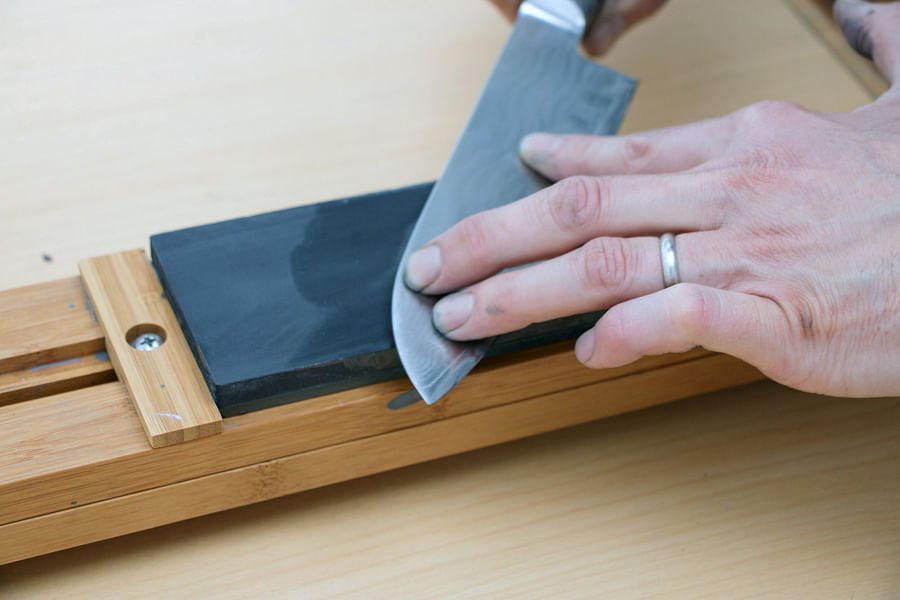
A knife is one of the most important things in the kitchen for cooking and it makes sense to keep it in top shape. This is all the more necessary if one has spent a good amount of money to buy an expensive chef knife.
A knife from a reputed brand and made with the best quality steel is bound to lose its sharpness edge someday. Knives will lose sharpness faster if plastic cutting boards are used. Therefore, wooden boards are recommended.
Dull knives should never be used because they are more likely to cause injury than a sharp one. For example, while cutting a ripe tomato, a dull knife will not be able to cut easily and there is a chance that the knife will slip and injure the user’s fingers. A sharp one will cut instantly and there is less chance of injury. Of course, it is important to handle sharp knives carefully and learn proper cutting procedure.
There are still some of those men who walk the streets with a grinding stone. Getting kitchen knives sharpened by them is an easy way out and they are okay for inexpensive knives.
But what about expensive and exotic knives?
Well, one could sharpen them at home.
There are three ways of doing it – with knife sharpener tools, sharpening steel or using whetstone/ combination block.
Before getting down to sharpening a knife, it is important to know what is the angle it had been sharpened during manufacturing. Generally speaking, Japanese knives have a 15-degree edge as compared to western knives that have a 20-degree edge. This means that Japanese knives tend to have a finer edge and are much sharper. Knowing the angle of the edge is more important while sharpening it with a whetstone or combination block.
There are plenty of knife sharpeners available in the market and using one is the easiest way of getting a sharp edge. The knife has to be placed in the sharpening slot and then pulled towards the user a few times or till the edge is sharp. These are available at various price points. They can have steel or ceramic sharpening edges. Ceramic sharpening tools tend last longer than the steel ones.
Electric sharpening tools are also available and it is much easier with these than the manual ones.
These sharpeners will have two or three slots which will sharpen and hone the edge.
The second method is to use a sharpening steel or honing steel. This is a metal rod with ridges running along the length and a plastic or wooden handle for holding it. The knife edge has to be brought in contact and slid across, right from the back edge to the tip. Doing this for an equal number of times on both sides of the knife will sharpen it. Caution has to be exercised and the knife should be moved away from you. If the knife is moved towards the user, there is every danger of injuring oneself. There are online tutorial videos that could be of help.
The more exotic ones are made with ceramic or are diamond edged.
This method is more of honing than sharpening. Many chefs recommend honing the knife before or after use since the edge will never be allowed to go blunt. This way, the knife will be sharp always.
The third method is using a whetstone or combination block. This is a rectangular block of an abrasive material that can be used to sharpen the knife. This method is slightly more difficult than the other two because it needs practice to hold the knife at the proper angle at all times to obtain an even edge.
These stones should be soaked in water for some time before use. Even while sharpening, there should be water on the surface. One school of thought says that this moves away the metal dust that is removed from the blade during the sharpening process. The other thought is that when used dry, the stone surface might begin to disintegrate.
Again, there are a lot of tutorial videos that can help us understand this method of sharpening.
Finally, how does one tell if a knife is sharp enough?
A sharp knife will cut a ripe tomato very easily. The second test is that it should be able to slice through normal printing paper.
If the knife can do both of these, your sharpening effort has been successful.